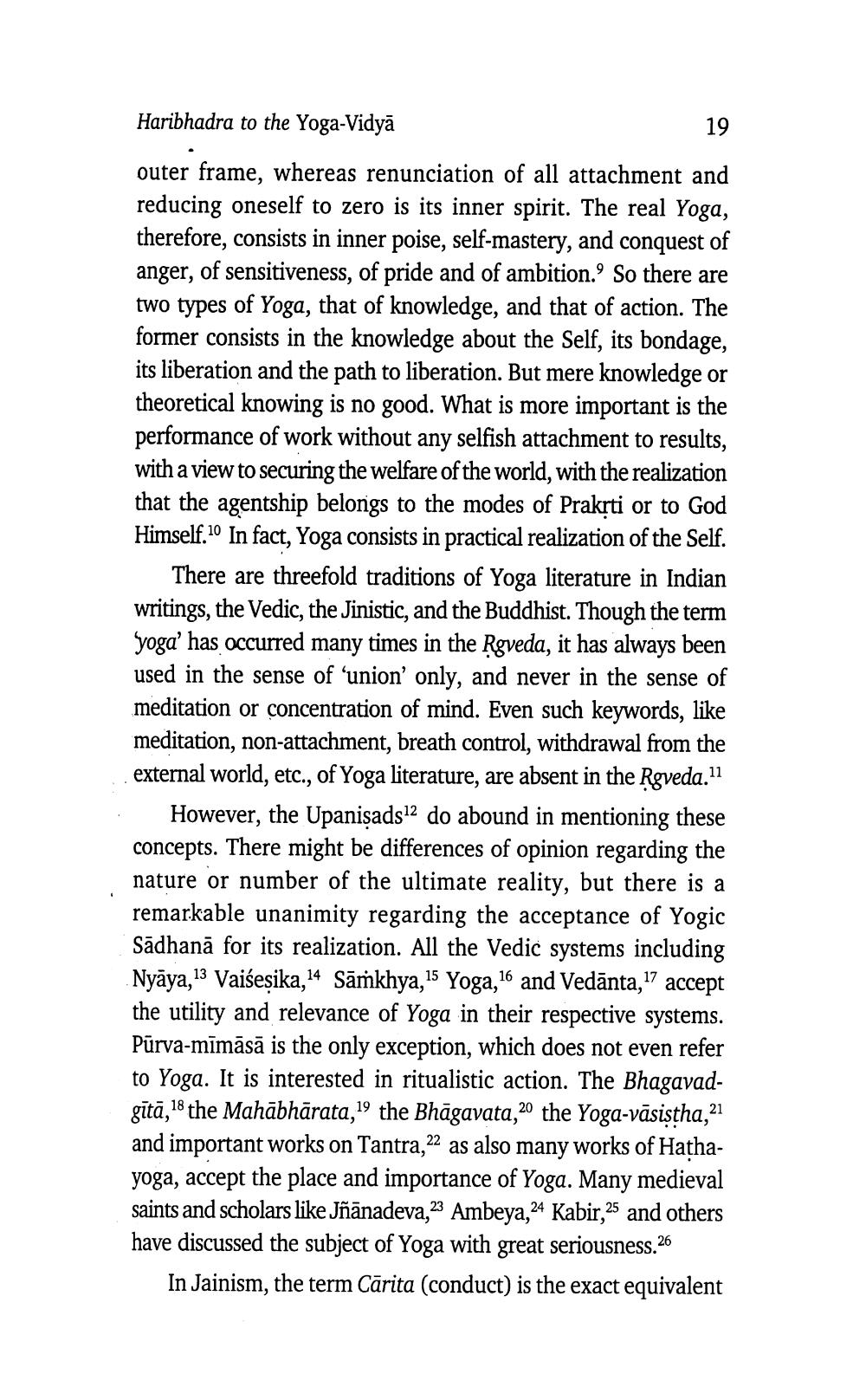________________
Haribhadra to the Yoga-Vidyā
19
outer frame, whereas renunciation of all attachment and reducing oneself to zero is its inner spirit. The real Yoga, therefore, consists in inner poise, self-mastery, and conquest of anger, of sensitiveness, of pride and of ambition.' So there are two types of Yoga, that of knowledge, and that of action. The former consists in the knowledge about the Self, its bondage, its liberation and the path to liberation. But mere knowledge or theoretical knowing is no good. What is more important is the performance of work without any selfish attachment to results, with a view to securing the welfare of the world, with the realization that the agentship belongs to the modes of Praksti or to God Himself.10 In fact, Yoga consists in practical realization of the Self.
There are threefold traditions of Yoga literature in Indian writings, the Vedic, the Jinistic, and the Buddhist. Though the term yoga' has occurred many times in the Rgveda, it has always been used in the sense of ‘union' only, and never in the sense of meditation or concentration of mind. Even such keywords, like meditation, non-attachment, breath control, withdrawal from the external world, etc., of Yoga literature, are absent in the Rgveda. 11
However, the Upanişads12 do abound in mentioning these concepts. There might be differences of opinion regarding the nature or number of the ultimate reality, but there is a remarkable unanimity regarding the acceptance of Yogic Sādhanā for its realization. All the Vedic systems including Nyāya, 13 Vaiseșika, 14 Sāmkhya, 15 Yoga,16 and Vedānta,7 accept the utility and relevance of Yoga in their respective systems. Pūrva-mīmāsā is the only exception, which does not even refer to Yoga. It is interested in ritualistic action. The Bhagavadgītā, 18 the Mahābhārata,19 the Bhāgavata,20 the Yoga-vāsistha,21 and important works on Tantra, 22 as also many works of Hathayoga, accept the place and importance of Yoga. Many medieval saints and scholars like Jñānadeva,23 Ambeya, 24 Kabir,25 and others have discussed the subject of Yoga with great seriousness.26
In Jainism, the term Cārita (conduct) is the exact equivalent




